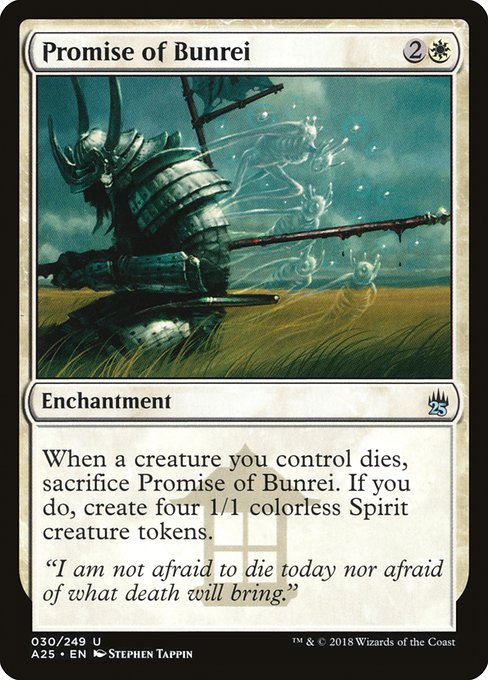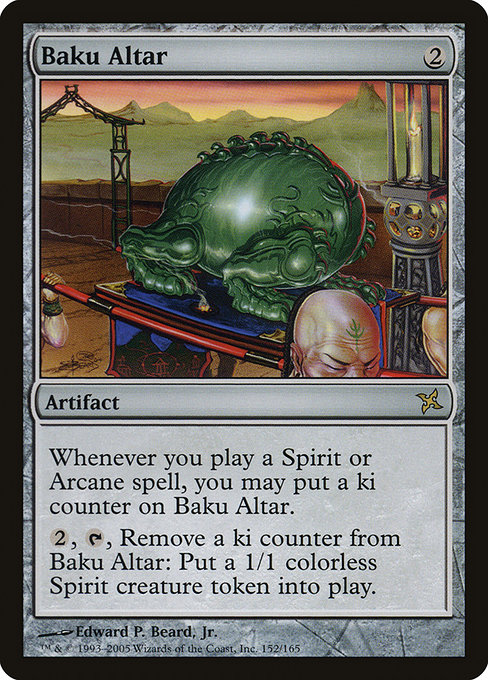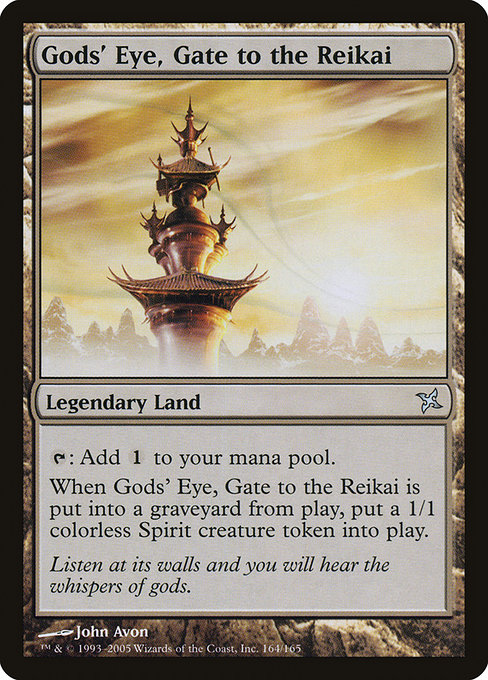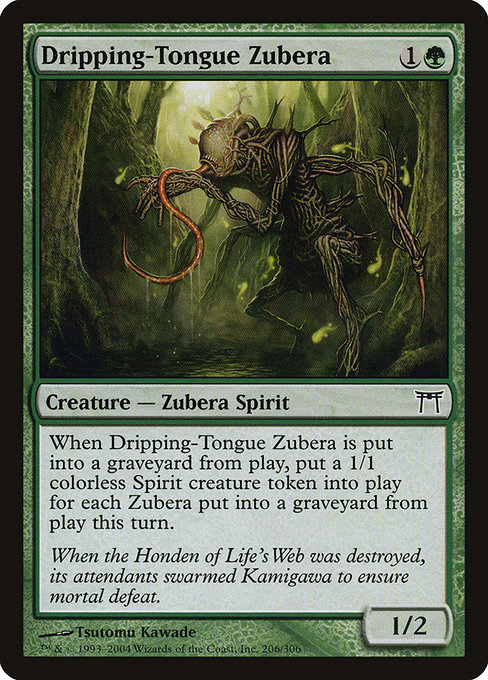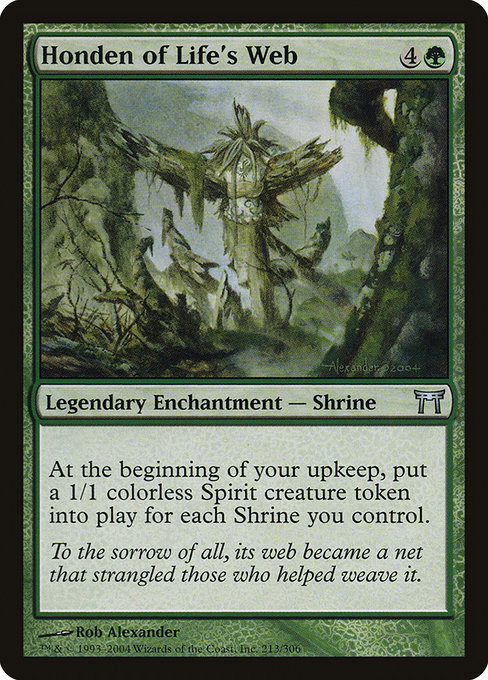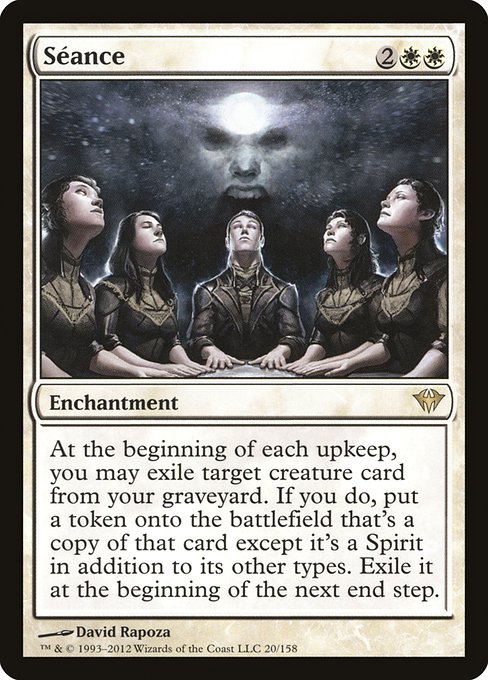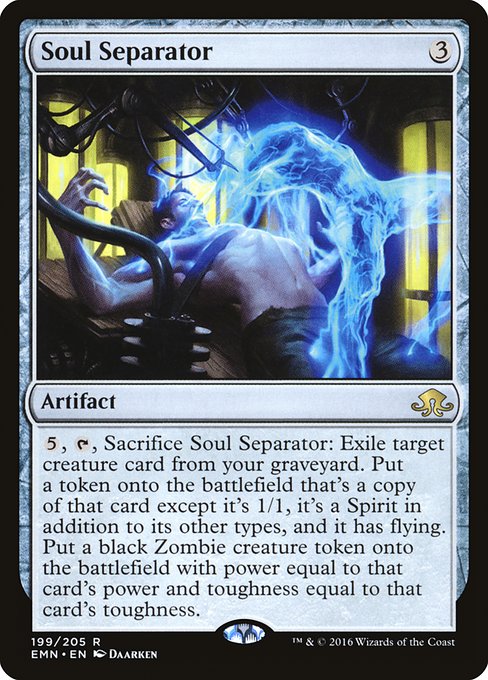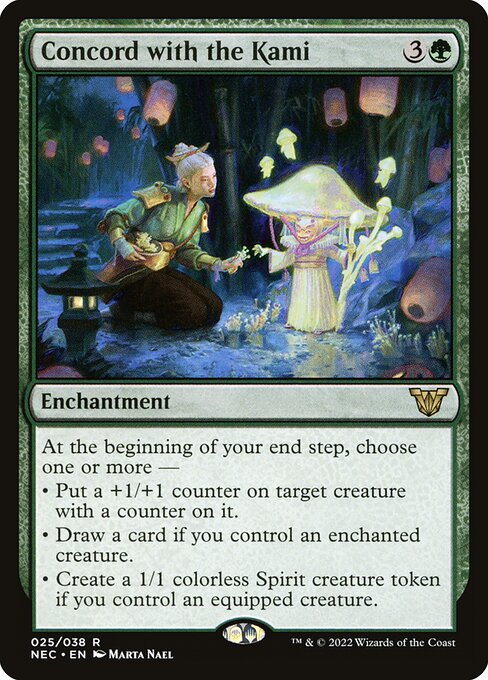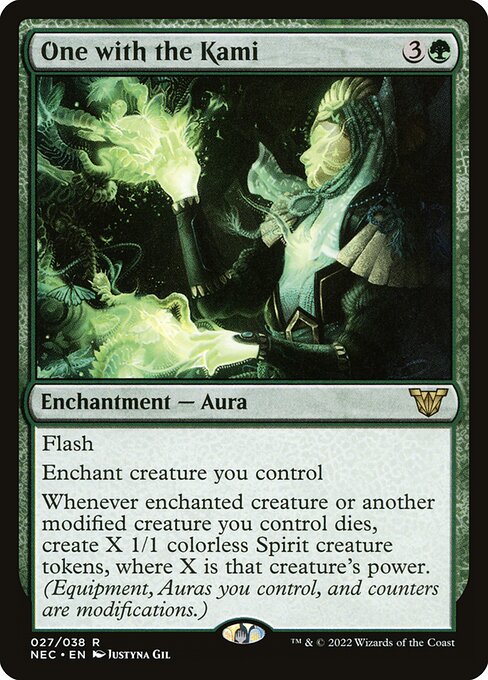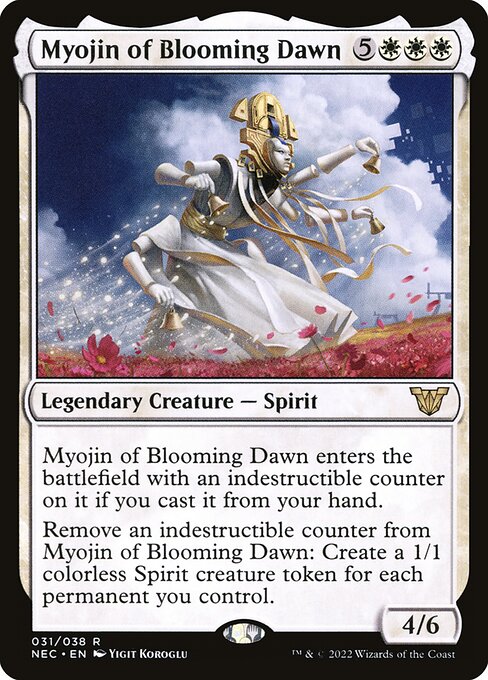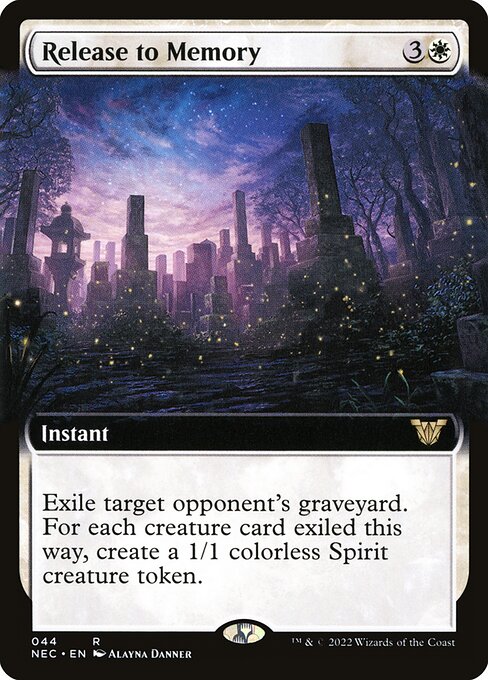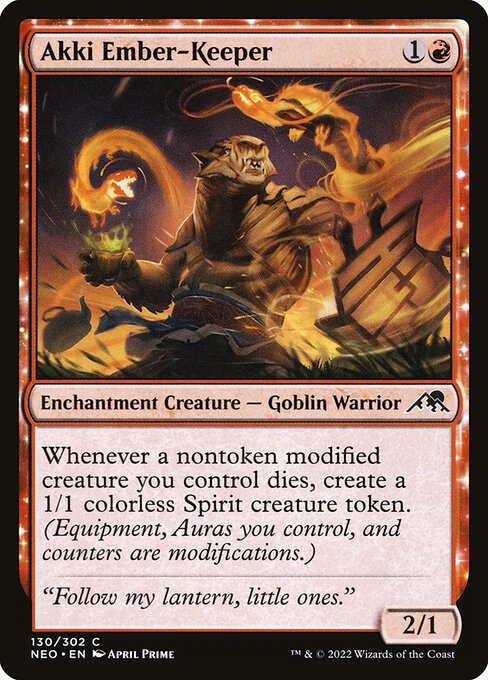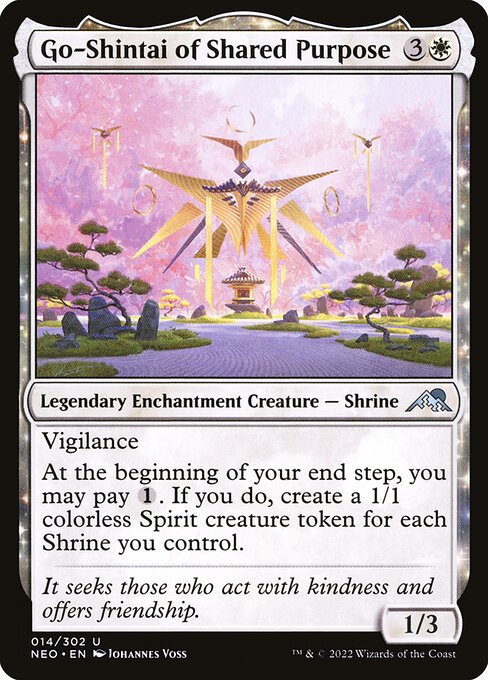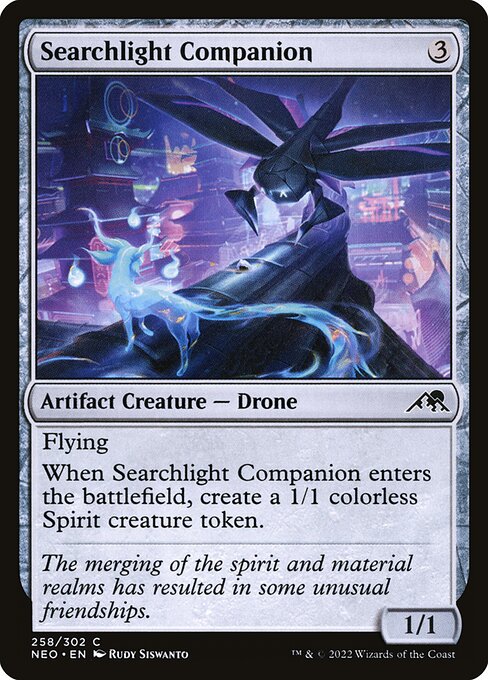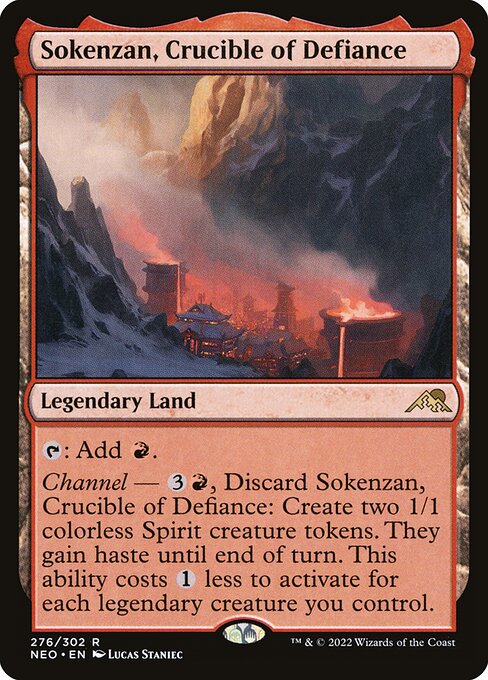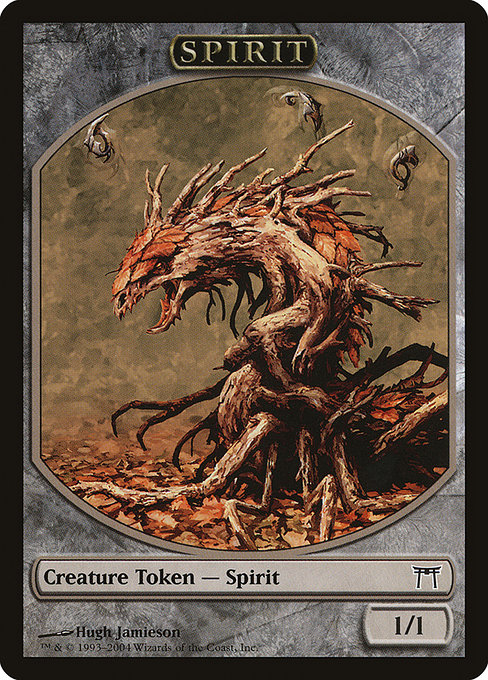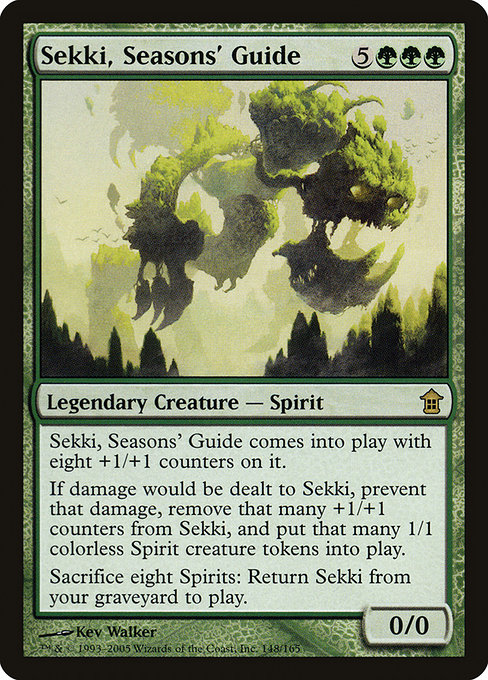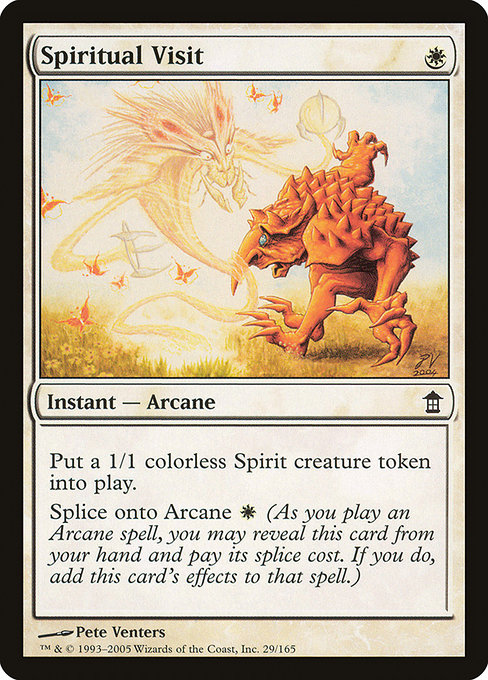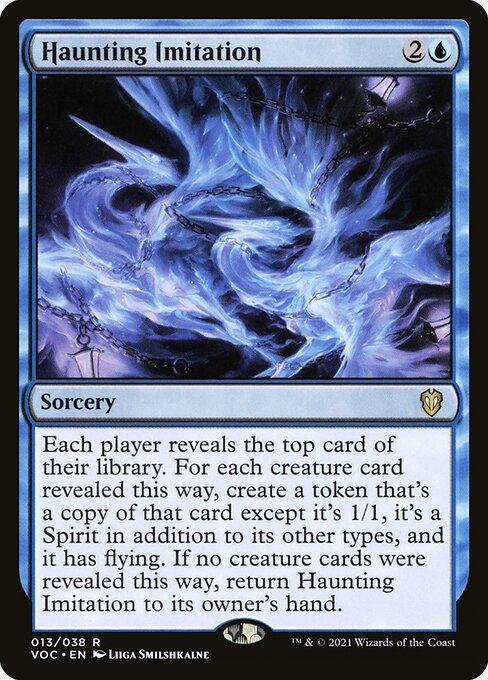Restauration d'Eiganjo // Architecte de la restauration
//
Enchantement — saga // Créature-enchantement — renard et moine
(Au moment où cette saga arrive sur le champ de bataille et après votre étape de pioche, ajoutez un marqueur « sapience ».)
I — Cherchez dans votre bibliothèque une carte de plaine de base, révélez-la, mettez-la dans votre main, puis mélangez.
II— Vous pouvez vous défausser d'une carte. Quand vous faites ainsi, renvoyez sur le champ de bataille depuis votre cimetière, engagée, une carte de permanent ciblée avec une valeur de mana inférieure ou égale à 2.
III— Exilez cette saga, puis renvoyez-la sur le champ de bataille, transformée et sous votre contrôle. // Vigilance
À chaque fois que l'Architecte de la restauration attaque ou bloque, créez un jeton de créature 1/1 incolore Esprit.
I — Cherchez dans votre bibliothèque une carte de plaine de base, révélez-la, mettez-la dans votre main, puis mélangez.
II— Vous pouvez vous défausser d'une carte. Quand vous faites ainsi, renvoyez sur le champ de bataille depuis votre cimetière, engagée, une carte de permanent ciblée avec une valeur de mana inférieure ou égale à 2.
III— Exilez cette saga, puis renvoyez-la sur le champ de bataille, transformée et sous votre contrôle. // Vigilance
À chaque fois que l'Architecte de la restauration attaque ou bloque, créez un jeton de créature 1/1 incolore Esprit.
3/4
standard
future
historic
gladiator
pioneer
modern
legacy
pauper
vintage
penny
commander
brawl
alchemy
paupercommander
duel
oldschool
premodern
Rulings
If you choose to discard a card as The Restoration of Eiganjo's second chapter ability resolves, a second triggered ability goes on the stack and you choose a target for it. Notably, this means you may target the card you discarded if it is a permanent card with mana value 2 or less.
The mana value of a transforming double-faced card is the mana value of its front face, no matter which face is up.
Each face of a transforming double-faced card has its own set of characteristics: name, types, subtypes, abilities, and so on. While a transforming double-faced permanent is on the battlefield, consider only the characteristics of the face that's currently up. The other set of characteristics is ignored.
Each transforming double-faced card in this set is cast face up. In every zone other than the battlefield, consider only the characteristics of its front face. If it is on the battlefield, consider only the characteristics of the face that's up; the other face's characteristics are ignored.
A transforming double-faced card enters the battlefield with its front face up by default, unless a spell or ability instructs you to put it onto the battlefield transformed or you cast it transformed, in which case it enters with its back face up.
If you are instructed to put a card that isn't a double-faced card onto the battlefield transformed, it will not enter the battlefield at all. In that case, it stays in the zone it was previously in. For example, if a single-faced card is a copy of Azusa's Many Journeys, the chapter III ability will cause it to be exiled and then remain in exile.
The back face of a transforming double-faced card usually has a color indicator that defines its color.
The mana value of a transforming double-faced card is the mana value of its front face, no matter which face is up.
Each face of a transforming double-faced card has its own set of characteristics: name, types, subtypes, abilities, and so on. While a transforming double-faced permanent is on the battlefield, consider only the characteristics of the face that's currently up. The other set of characteristics is ignored.
Each transforming double-faced card in this set is cast face up. In every zone other than the battlefield, consider only the characteristics of its front face. If it is on the battlefield, consider only the characteristics of the face that's up; the other face's characteristics are ignored.
A transforming double-faced card enters the battlefield with its front face up by default, unless a spell or ability instructs you to put it onto the battlefield transformed or you cast it transformed, in which case it enters with its back face up.
If you are instructed to put a card that isn't a double-faced card onto the battlefield transformed, it will not enter the battlefield at all. In that case, it stays in the zone it was previously in. For example, if a single-faced card is a copy of Azusa's Many Journeys, the chapter III ability will cause it to be exiled and then remain in exile.
The back face of a transforming double-faced card usually has a color indicator that defines its color.
Rulings
If you choose to discard a card as The Restoration of Eiganjo's second chapter ability resolves, a second triggered ability goes on the stack and you choose a target for it. Notably, this means you may target the card you discarded if it is a permanent card with mana value 2 or less.
The mana value of a transforming double-faced card is the mana value of its front face, no matter which face is up.
Each face of a transforming double-faced card has its own set of characteristics: name, types, subtypes, abilities, and so on. While a transforming double-faced permanent is on the battlefield, consider only the characteristics of the face that's currently up. The other set of characteristics is ignored.
Each transforming double-faced card in this set is cast face up. In every zone other than the battlefield, consider only the characteristics of its front face. If it is on the battlefield, consider only the characteristics of the face that's up; the other face's characteristics are ignored.
A transforming double-faced card enters the battlefield with its front face up by default, unless a spell or ability instructs you to put it onto the battlefield transformed or you cast it transformed, in which case it enters with its back face up.
If you are instructed to put a card that isn't a double-faced card onto the battlefield transformed, it will not enter the battlefield at all. In that case, it stays in the zone it was previously in. For example, if a single-faced card is a copy of Azusa's Many Journeys, the chapter III ability will cause it to be exiled and then remain in exile.
The back face of a transforming double-faced card usually has a color indicator that defines its color.
The mana value of a transforming double-faced card is the mana value of its front face, no matter which face is up.
Each face of a transforming double-faced card has its own set of characteristics: name, types, subtypes, abilities, and so on. While a transforming double-faced permanent is on the battlefield, consider only the characteristics of the face that's currently up. The other set of characteristics is ignored.
Each transforming double-faced card in this set is cast face up. In every zone other than the battlefield, consider only the characteristics of its front face. If it is on the battlefield, consider only the characteristics of the face that's up; the other face's characteristics are ignored.
A transforming double-faced card enters the battlefield with its front face up by default, unless a spell or ability instructs you to put it onto the battlefield transformed or you cast it transformed, in which case it enters with its back face up.
If you are instructed to put a card that isn't a double-faced card onto the battlefield transformed, it will not enter the battlefield at all. In that case, it stays in the zone it was previously in. For example, if a single-faced card is a copy of Azusa's Many Journeys, the chapter III ability will cause it to be exiled and then remain in exile.
The back face of a transforming double-faced card usually has a color indicator that defines its color.
Your collection? Your decks?
Want to manage your collection and/or create decks?
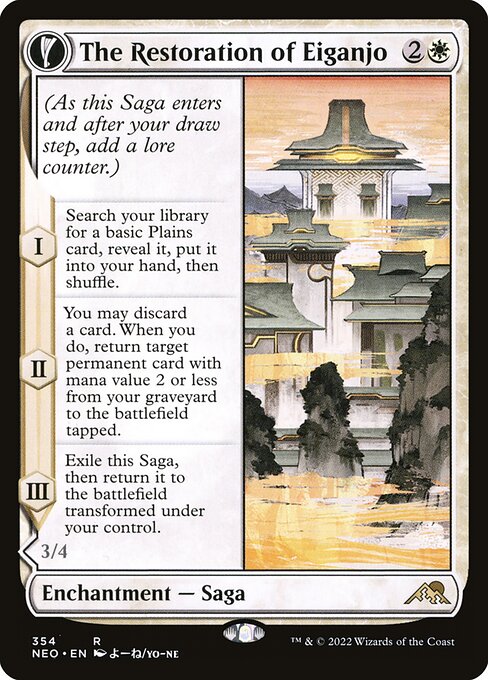

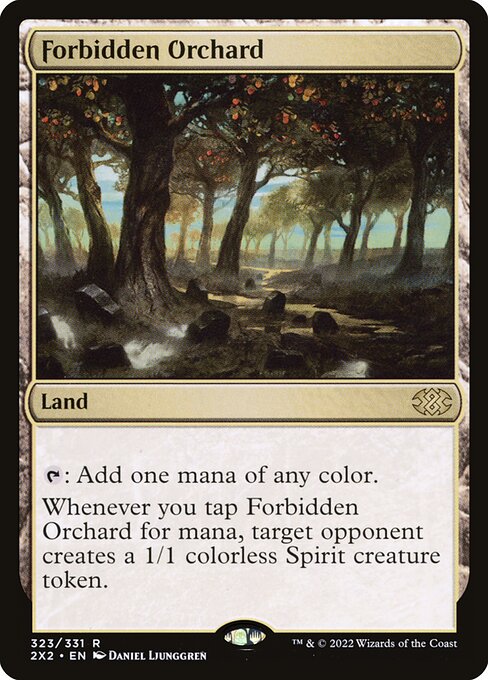

 4.54€
4.54€
